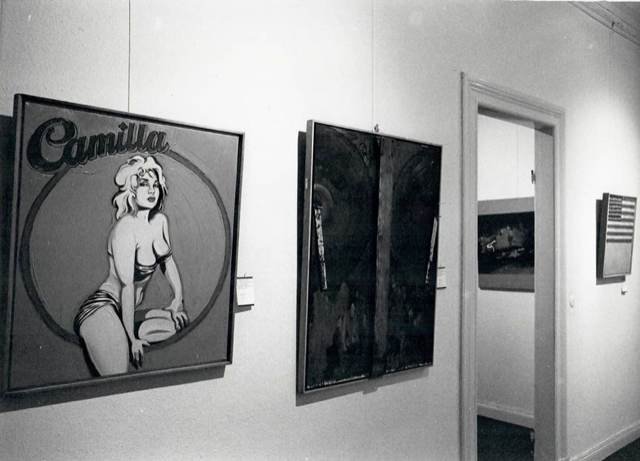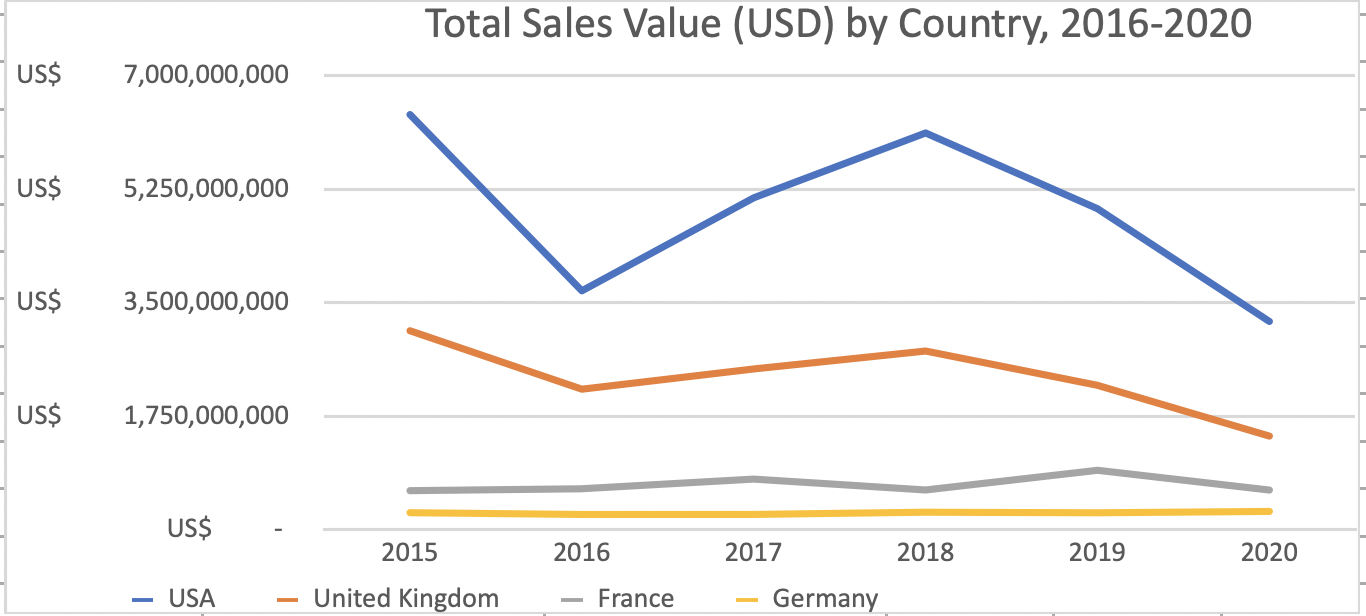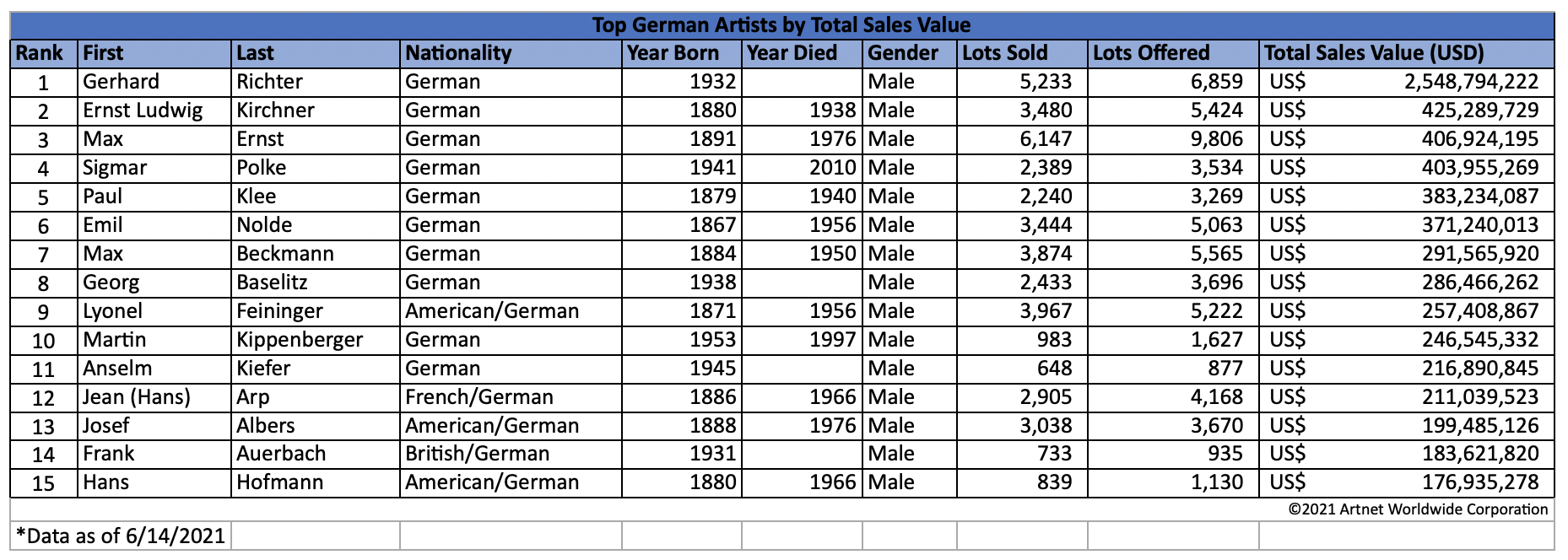
Auctioneer Oliver Barker directing Sotheby’s global e-auctions. Courtesy of Sotheby’s.
Following the announcement of Sotheby’s Cologne office, artnet’s Vice President and LUX columnist Sophie Neuendorf discusses shifting collecting habits and the potential for Germany to become a key player in the art world
The recent news that Sotheby’s is opening an office in Cologne, Germany has made waves internationally but also ruffled a few feathers within the German market. However, given the ramifications of Brexit, which is making import and export transactions much more cumbersome, it’s hardly a surprising decision. Christie’s has been steadily strengthening its presence Paris over the last few years and Amsterdam is much smaller in terms of buyer opportunities so the EU’s largest country in terms of size and economic strength seems the logical choice for Sotheby’s.
Follow LUX on Instagram: luxthemagazine
According to the auction house, “German collectors remain essential to Sotheby’s business, featuring in the list of top ten countries most actively buying and selling in Sotheby’s sales for the past three years.” In this light, it’s hard to imagine that the aim of the opening is centred solely around the potential of new collectors, but what is of interest is the abundance of private collections in Germany, which provide ample opportunities for acquiring unique and unseen masterpieces.
Germany is renowned for its impressive history of supporting the arts, from fine arts to music or literature. Many of the most important art collections worldwide are located in Germany, and quite a few of these marvellous collections will be handed down to the next generation before too long.

Neuendorf Gallery pop art exhibition 1964 in Hamburg, Germany.
“The German art market is outstanding in Europe with its strong collectors on the one hand and its internationally sought-after artists on the other,” comments Alice von Seldeneck of Germany’s prestigious Lempertz auction house. “After Brexit and the uncertainties and costs associated with it, it was a logical conclusion to establish another foothold on the continent. We had expected this to happen much sooner.”
Read more: The art of cross-collecting by Philip Hewat-Jaboor
According to artnet data, German collectors have historically favoured Impressionist and Modern art, closely followed by Post War and Old Masters paintings. Now, these same categories are tied to tedious export rules and regulations, newly introduced by Germany’s culture minister (ostensibly to protect Germany’s cultural heritage), which are suppressing international trade. The fourth most popular collecting category is Contemporary Art, which is much easier to buy and sell internationally. With the rise of the new millennial generation of collectors, perhaps the German market is primed for a shift in wealth and collecting habits?

Infographic courtesy of artnet
Germany ranks 4th in terms of sales in western countries after the United States, the United Kingdom, and France (source: art net). “In 2020, 40% of German bidders were new to the company, while the number of German buyers in online sales tripled, ” revealed a spokesperson from Sotheby’s. With many of Europe’s hottest emerging artists flocking to Berlin, it’s only a matter of time until the country becomes a hot spot in terms of Contemporary and Ultra Contemporary art.
“Berlin is an ideal combination of a strong primary and secondary market with different generations of collectors,” says von Seldeneck. “The strong consignments from abroad show us how highly regarded the German art market is internationally.”

Infographic courtesy of artnet
The city is a place of inspiration for many creatives from around the world as reflected by the plethora of blue chip galleries that have recently opened in the German capital. Four of the world’s top earning artists – Gerhard Richter, Georg Baselitz, Anselm Kiefer, and Frank Auerbach – are also Germany-based. But will this rise in popularity be reflected in actual sales and growth of the market?
Read more: The gastronomic delights of Suvretta House, Switzerland
According to Berlin-based gallerist and former BVDG (German Association of Galleries) board member Klaus Gerrit Friese, the entry of Sotheby’s into the German market is a testament to the country’s strength and potential for growth. “I’m very positive about the future of the German art market. The new generation of gallerists have developed radically new ideas about viewing and selling art, which goes hand in hand with the rise of millennial collectors. So, the real potential lies in the Contemporary and Ultra Contemporary market, where I have observed a lot of upward movement in Germany over the past few years,” he says.
While Germany seems primed to become one of the world’s most important countries in terms of both creativity and sales, it remains to be seen whether the coming generational change and shift in collecting preferences will propel the country into the upper echelons of the market.
Follow Sophie Neuendorf on Instagram: @sophieneuendorf








